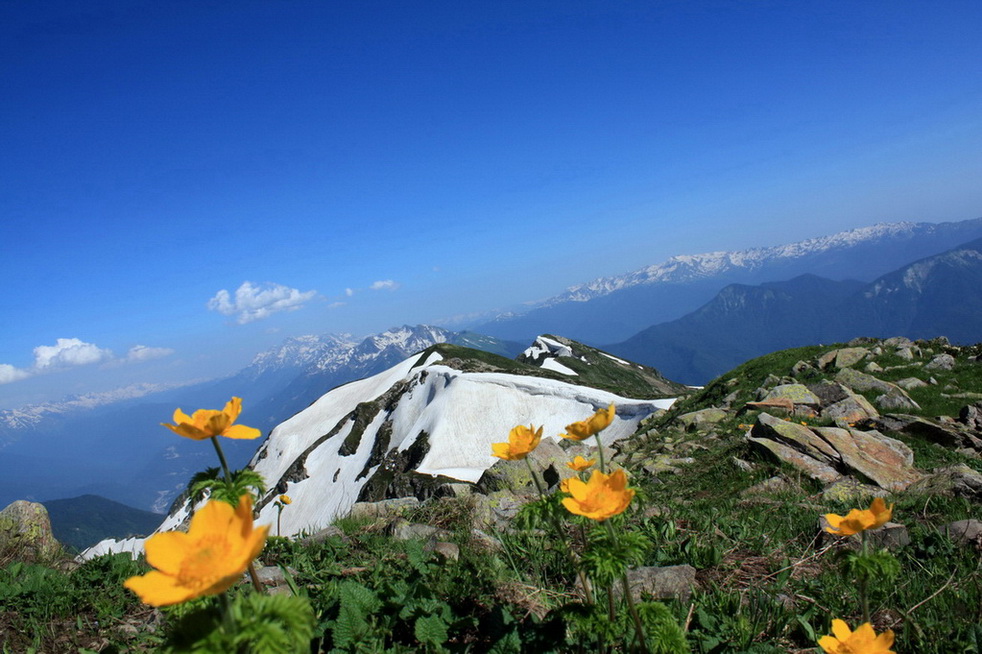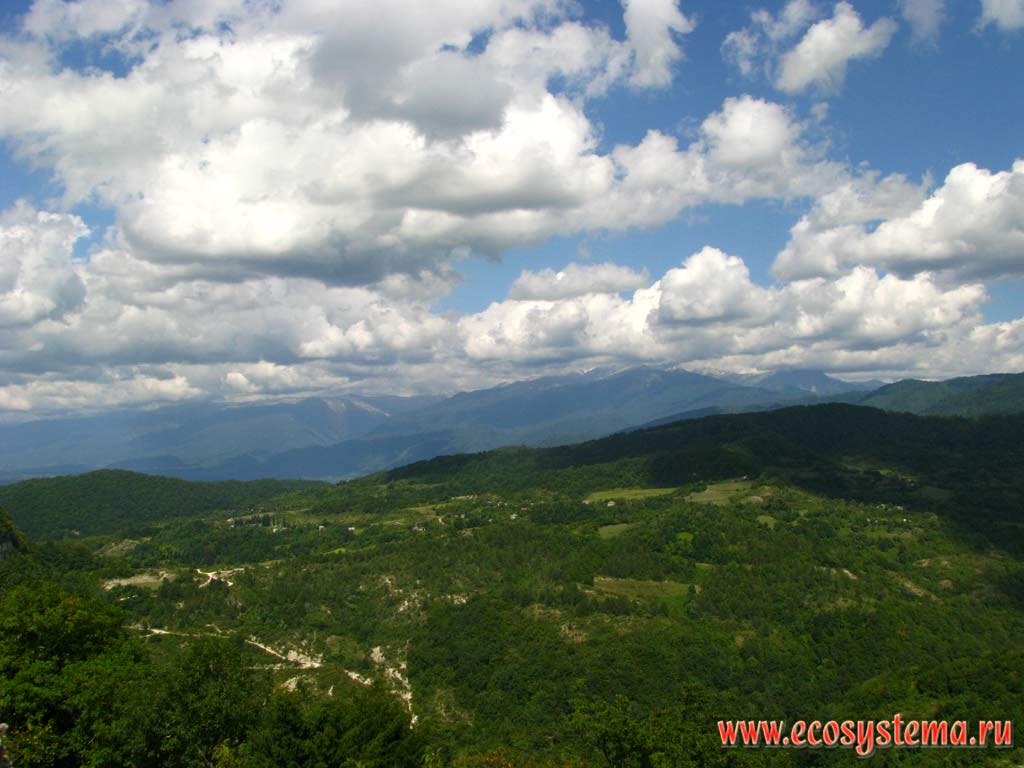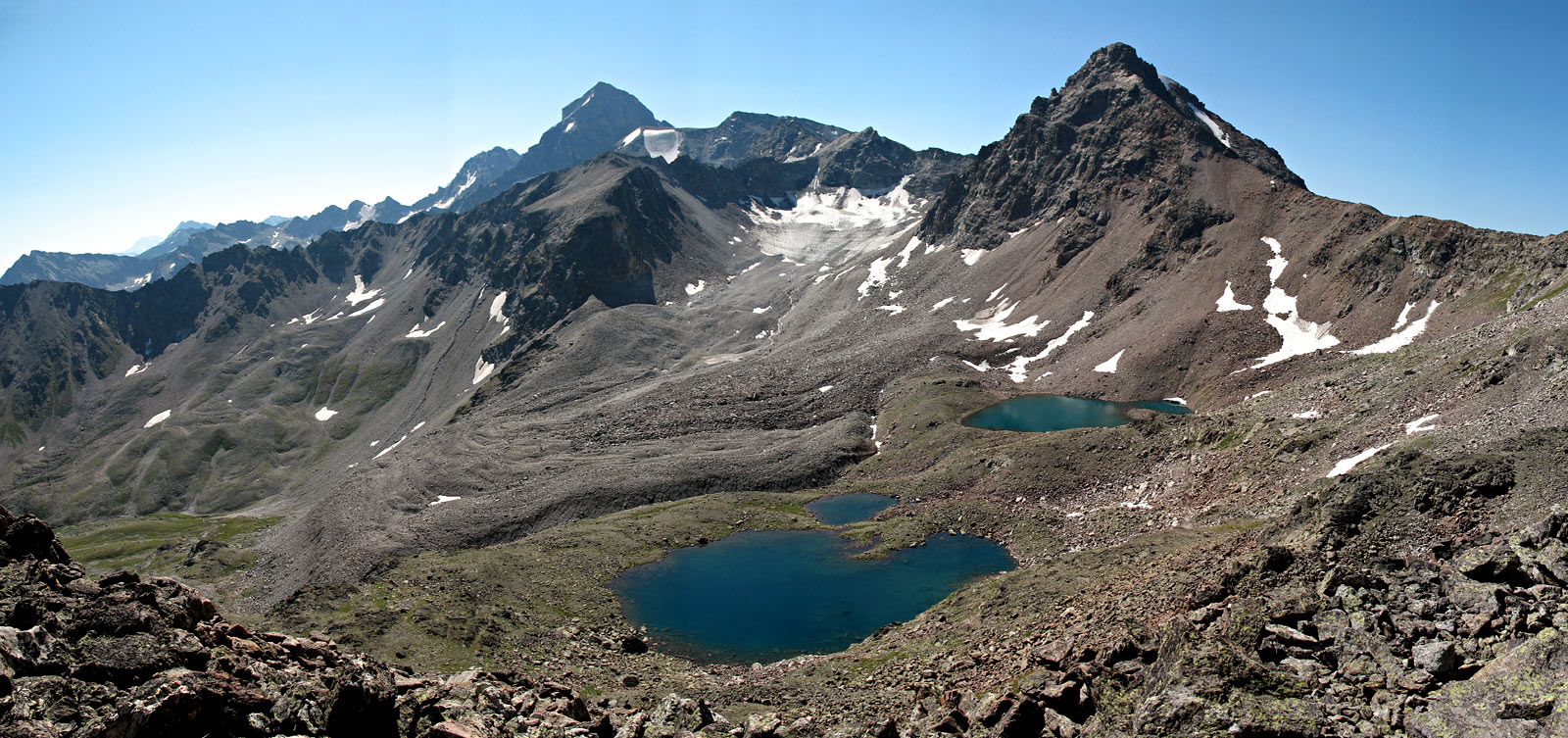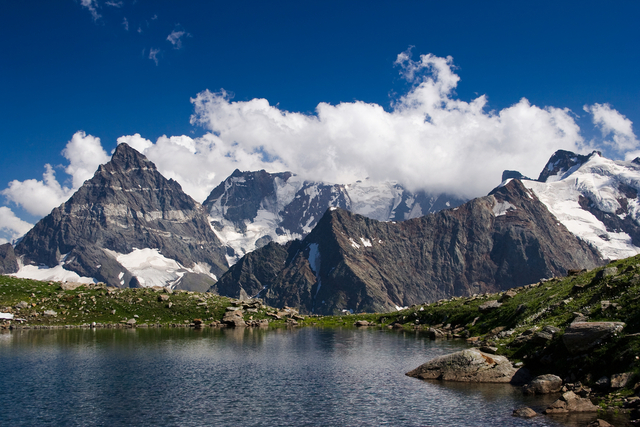The Western Caucasus, extending over 275,000 ha of the extreme western end of the Caucasus mountains and located 50 km north-east of the Black Sea, is one of the few large mountain areas of Europe that has not experienced significant human impact. Its subalpine and alpine pastures have only been grazed by wild animals, and its extensive tracts of undisturbed mountain forests, extending from the lowlands to the subalpine zone, are unique in Europe. The site has a great diversity of ecosystems, with important endemic plants and wildlife, and is the place of origin and reintroduction of the mountain subspecies of the European bison.
The remainder of the site comprises four small areas in Adygea Republic: Bolshoy Thach nature park; the nature monuments of Buiny Ridge, the headwaters of the River Tsitsa and the Pshecha and Pshechashcha rivers. The region is mountainous, ranging in altitude from 250 m to peaks over 3,000 m, of which the highest is Akaragvarta (3,360 m). The geology is very diverse, including sedimentary, metamorphic and igneous rocks from the full span of eras from the Precambrian to the Palaeozoic; it is also very complex, reflecting the origin of the Caucasus Mountains. The north part of the site is characterized by karst limestone massifs with many caves, including 130 in the Lagonaki massif alone. Over the majority of the site the landscape has a typical glaciated relief, with high peaks, 60 remnant glaciers, moraines, and over 130 high-altitude lakes. The main rivers on the north side are the Bol'shaya Laba and Belaya, which feed into the Kuban; on the south side the rivers are shorter, flowing into the Black Sea. There are numerous waterfalls, up to 250 m in height.













